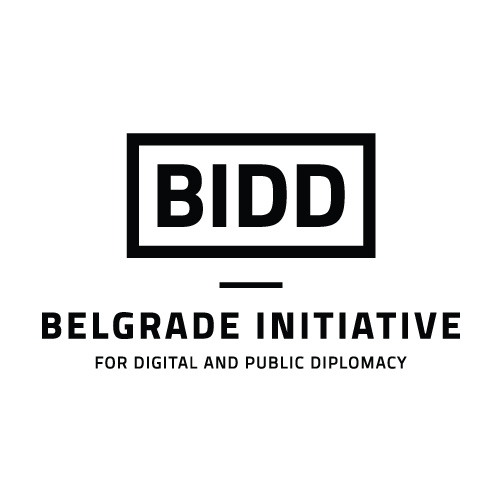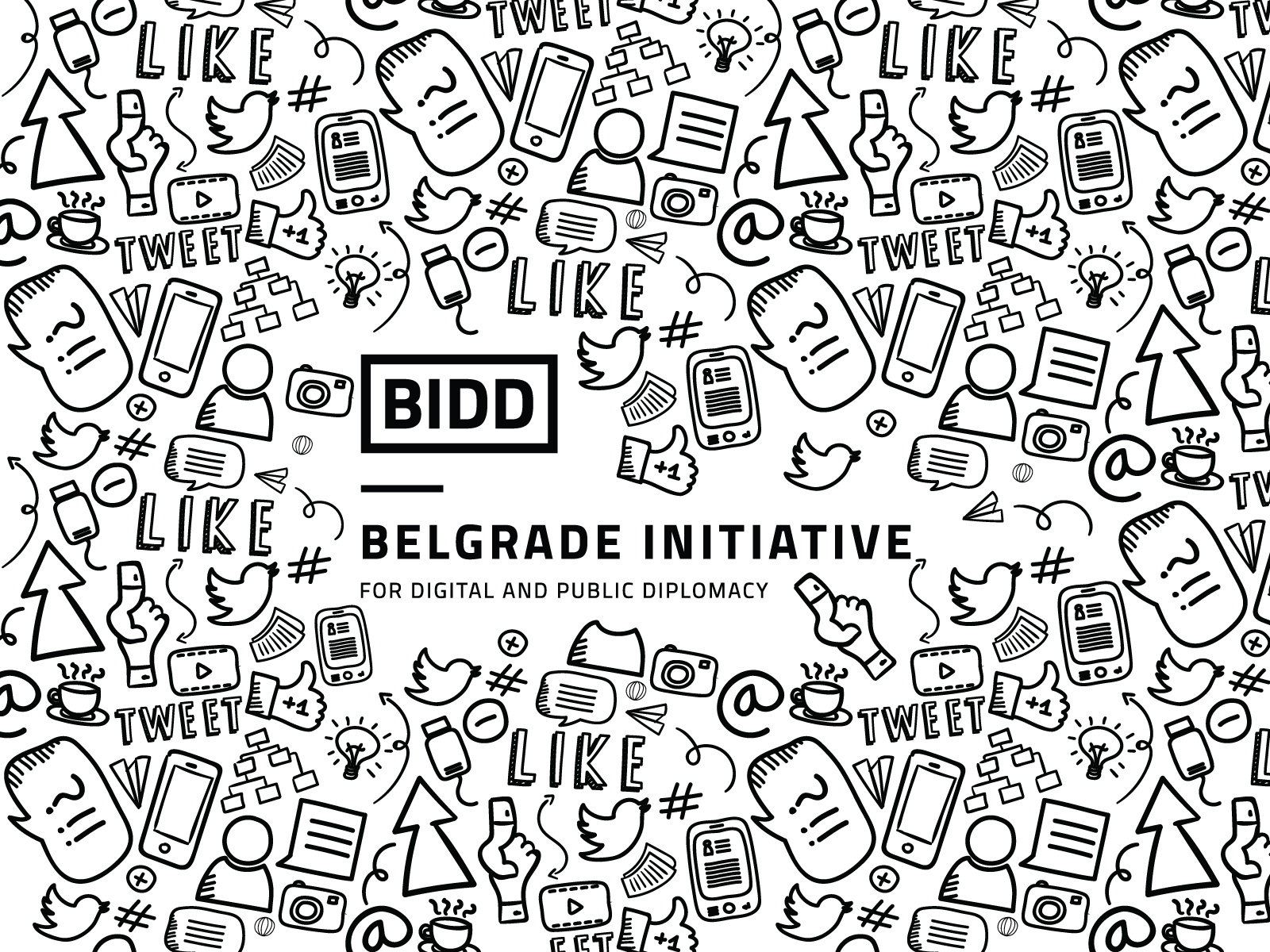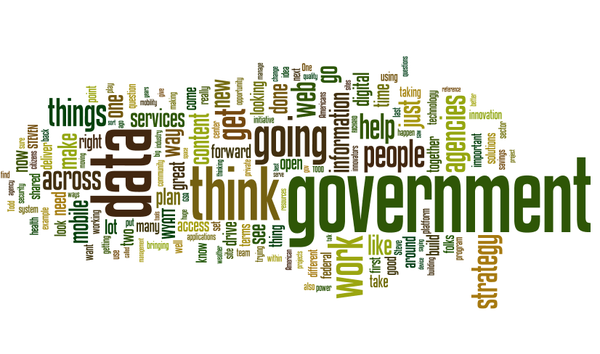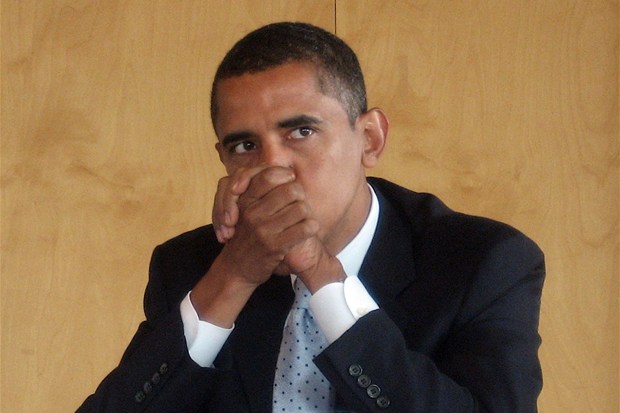How do you Define Terrorism? What are your Justifications for this Definition?
In 1956 political theorist and philosopher Walter Gallie delivered a paper to the Aristotelian Society in which he coined the term “essentially contested concept.” In Gallie’s words, these are “concepts the proper use of which inevitably involves endless disputes about their proper uses on the part of their users.”[1] Fellow philosopher John Gray built upon Gallie’s conceptual definition, adding that disputes on such contested concepts “cannot be settled by appeal to empirical evidence, linguistic usage, or the canons of logic alone.”[2] One can see from the development of Terrorism Studies over the last four decades that the term terrorism itself undoubtedly fits the framework of Gallie’s “essentially contested concept.” Alex Schmid and Albert Jongman’s Political Terrorism, for example, offers over 100 differing definitions given by surveyed experts when asked to define the term.[3] In their words, “authors have spilled almost as much ink (trying to define the concept) as the actors of terrorism have spilled blood.”[4]
Despite subscribing to the belief that terrorism is indeed an “essentially contested concept”, destined to be subject to reformulation and argument, my definition of terrorism coincides with that of Christopher Mitchell et al.:
In sum, terrorism by the state (or non-state actors) involves deliberate coercion and violence (or the threat thereof) directed at some victim, with the intention of inducing extreme fear in some target observers who identify with that victim in such a way that they perceive themselves as potential future victims. In this way, they are forced to consider altering their behavior in some manner desired by the actor.”[5]
This characterisation makes it clear that terrorism is a strategy, not an ideology, psychology, or mind set, and it is the burden of this paper to justify my chosen definition. I will do this by deconstructing the definition in to its individual components, analyzing them, and offering supportive evidence and examples to strengthen its credibility. The four main focuses of this essay will be: 1) Why do we need to define terrorism?; 2) States and non-state actors as perpetrators of terrorism; 3) Target-victim differentiation and the spread of terror amongst a wider population; 4) Objectives and the desire of terrorism to alter behaviour.
Why do we Need a Single Definition?
First, we must decipher whether a definition is required. It may be argued that agreeing upon a definition is an exercise in futility: we would like to develop one, but do we actually need one? Is striving to define the term a “hopeless undertaking”, as Laqueur suggests?[6] In the words of Louise Richardson: “like pornography, we know terrorism when we see it.”[7] If this is the case, why define it?
It is the belief of this author that a definition is indeed needed, if not wholly agreed upon,[8] not only to allow for clearer debate amongst the social sciences, but also to protect victims of terrorism under international law, where the term terrorism is yet to be defined definitively. The misidentification of terrorism and haphazard labelling of any form of violence as terrorism does nothing to aid the cause of those victim to “true” terrorism. In “Defining ‘Terrorism’ to Protect Human Rights”, Ben Saul writes:
‘Terrorism’ currently lacks the precision, objectivity and certainty demanded by legal discourse. Criminal law strives to avoid emotive terms to prevent prejudice to an accused, and shuns ambiguous or subjective terms as incompatible with the principle of non-retroactivity. If the law is to admit the term, advance definition is essential on grounds of fairness, and it is not sufficient to leave definition to the unilateral interpretations of States. Legal definition could plausibly retrieve terrorism from the ideological quagmire… Ultimately it must do so without criminalizing legitimate violent resistance to oppressive regimes – and becoming complicit in that oppression.[9]
The definition I present on behalf of Mitchell et al. is not necessarily the “advance definition” that Saul calls for, but I believe it to be a move in the right direction. It is an attempt to move towards an objective conceptualization of the term under review, preventing the issues that arise from the “unilateral interpretations of states.” It is also “fair”, in that it accepts both states and non-state actors as perpetrators of terrorism violence and is only applicable to certain types of political violence with extremely particular intentions.
State and Subnational Actors as Perpetrators of Terrorism
In terrorism studies the onus has traditionally been on the subnational actor as a perpetrator of violence directed at civilian populations or state apparatus. Definitions of the term reflect this direction of inquiry, with given examples of terrorist acts exclusively vindicating non-state actors such as the Tamil Tigers, al Qaida, ETA, The Provisional IRA and the PLO, to name but a few. The comprehensive RAND Database of Worldwide Terrorism Incidents also reflects this trend.[10]
The result of this phenomenon is that traditional definitions of terrorism have often failed to recognize the state as a perpetrator of terrorist acts, or at least to label their actions as terrorism. Hoffman, for example, seeks to draw a firm line in the sand between what he sees as “terrorism”, “perpetrated by a subnational group or non-state entity”, and “terror”, that which is perpetrated by the state or those already in power.[11] Other ‘orthodox’ scholars such as Jenkins (1980) and Wilkinson (1981) also chose to recognize this distinction.[12] I see no reason why there should be a difference in terminology, as, in agreement with Ruth Blakeley, I believe that a definition of terrorism should be action based, rather than actor based.[13]
It is scholars such as Blakeley who have highlighted this actor-centric approach as a pitfall of the way in which terrorism is understood and studied:[14] how traditional definitions of terrorism have often failed to recognize the state as a guilty party, or at least to label their actions as terrorism in the sense that Mitchell et al. have conceptualized it. In Understanding Terrorism, Gus Martin asserts that “political violence by the state is the most organized and potentially most far-reaching application of terrorist violence.”[15] As stated, Blakeley shares this view, further commenting that: “(State terrorism)… is one of a number of repressive tools that great powers from the North have used extensively in the global South in the service of foreign policy objectives.”[16]
During the course of history states have been known to either violently repress their citizens internally using terror methods or to tacitly sponsor foreign states or paramilitary groups (with intelligence sharing, funding or military training) with the intent of removing unfavourable regimes or promoting their own state interests.[17] The US is a prime example of this, particularly during the Cold War years. The US public’s disdain at the failures of the Vietnam War meant that covert sponsorship of proxies was a favoured method of exacting political change in the international system. Important examples of state terrorism or state-sponsored terrorism that exemplify why the state must be involved in any definition of the term would be US sponsorship of the anti-Sandinista movement Contras in Nicaragua in the early 80s, the US’ attempted “neutralization” of the NLF (Operation Phoenix) during the Vietnam War[18], or, historically, actions carried out by state enforcers during Stalin’s “Great Terror” in the 20s and 30s. Torture, disappearings, indiscriminate killing and rape were just some of the tactics used by the state or their paramilitary proxies, showing that the state can also be guilty of using violence/threatening to use violence with the intention of inducing extreme fear in some target observers who identify with the victim in such a way that they perceive themselves as potential future victims and change their behavior as a consequence of the act(s). Thus, it is imperative that one includes the state in any definition of terrorism, whether as an indirect or direct actor, as Mitchell et al. have.
Inducing Extreme Terror Amongst a Wider Audience
In Political Terrorism Schmid and Jongman classify this characteristic of terrorism as “victim-target differentiation” – where the victims of attacks are not necessarily the intended target of coercion – finding that 51% of the 109 scholars who supplied definitions of terrorism included this characteristic.[19] Wilkinson famously distinguishes terrorism as being “a special form of political violence…directed at a wider audience or target than the immediate victims of the violence,”[20] and Mitchell et al. agree that “the creation of fear must be a means towards an end.”[21] Asta Maskaliunaite summarises the importance of this characteristic of terrorism particularly well, writing:
…Terrorism does not care about the victim itself. It is not what happens to the victim that is important, but how the fact of what happens to it will affect the target audience… This factor is closely related to creating the atmosphere of fear… Attacking a somewhat symbolic victim, it aims at producing the aforementioned atmosphere of fear, as a part of the population identifies itself with the victim and sees itself in its place.[22]
This seems to fit with terrorism’s history of symbolic targeting (high-ranking government officials or paramilitary/organisational leaders, for example) or, in more recent history, committing violence against “soft” targets (civilians, neutrals and non-combatants). The symbolic nature of targets, as mentioned by Maskaliunaite above, supports the idea that the intended goal of terrorism is to create extreme fear amongst an audience beyond the direct victim of the act. A poignant example of this would be Guatemalan “counterinsurgency” operations in the early 70s and 80s, where the state terrorized their rural populations in an attempt to prevent them supporting anti-state guerrilla networks. An Amnesty International report from 1976 states that local newspapers were allowed to publish images of death and torture as a warning to citizens to not to oppose the government,[23] thus reaffirming the idea that terrorism’s goal is to spread terror far beyond the victim(s) in an attempt to modify behaviour. Terror spread from the rural populations to the state as a whole.
At non-state level, Al-Qaida’s attack on the Twin Towers in 2001 was carried out to spread terror amongst the West, not just the United States. 3,000 people were killed as a result of those attacks, but the ‘success’ of the operation came when civilians began to believe that they could be next: if Al Qaida were willing to kill 3,000 innocent civilians, what would stop them trying to attack us next? The New York Times’ headline on September 12th even labelled the previous day as a “day of Terror.”[24] In line with Mitchell et al.’s definition and Maskaliunaite’s statement, there were target observers who identified with the victims in such a way that they perceived themselves as potential future victims and the terror spread. The Madrid train bombings in 2004 and 7/7 London bombings gave birth to this perception in Spain and Britain also – all three targets were supposedly in “safe” territory, thousands of miles from the Middle East. The aim of al Qaida was to create such a widespread atmosphere of fear that these Western powers reconsidered their foreign policy in regards to the Middle East, a political objective.[25] To count as “true” terrorism, an actor “must have the (primary) intention of inducing extreme fear in some population of observers.”[26] All given cases exemplify this intention.
Political Objectives and Altering Behavior
The question of objectives and the idea of altering behavior run parallel to one another. Bruce Hoffman writes that terrorism is “ineluctably political in aims and motives,”[27] finding support in this assertion from Crenshaw (1983), Backs and Jesse (1985), Crozier (1974) and Jenkins (1980), amongst others.[28] Alex Schmid also found a concurrence in the word ‘political’ in terms of motive in his 2004 study[29] and Wilkinson writes that “terrorism is used to try and influence political behaviour in some way; for example to force opponents into conceding some or all of the perpetrators’ demands, to provoke an over-reaction, to serve as a catalyst for more general conflict, or to publicise a political cause.”[30] In contrast to Blakeley (2010), in regards to terrorism by the state, I also see any act designed to spread terror amongst a wider audience to ensure subordination (to the state or government) as a political objective.
One can see the link between political objectives and the aim of modifying behaviour in the example previously given of 1970s and 80s Guatemala. The government’s immediate aim was to modify the behavior of the rural populations in regards to their support for anti-state guerilla movements, spreading terror and ultimately quashing its primary support base.[31] The state did this by parading tortured and dying victims in front of their families and releasing images of torture and mutilation in state newspapers. The over-arching political objective, however, was to remove oppostion and strengthen or consolidate the regime. The same can be seen in the Salvadoran Civil War, where the military-led government (funded by the US) deployed death squads against the civilian population during their war against the left-wing Farabundo Marti National Liberation Front (FMLN).[32] Acts of terrorism on behalf of the state are generally designed to alter the behaviour of certain groups through coercion or to force continued subordination.
In terms of non-state terrorism, actions by the Tamil Tigers in Sri Lanka had the ultimate political goal of creating a separate autnomous state for the Tamil people in the North, including economic self-determination,[33] and the IRA fought for the reunification of Ireland. In Palestine, Hamas is “working to create conditions conducive to emancipating the Palestinian people”, “delivering them from tyranny” and “liberating their land from the occupying usurper.”[34] These are undoubtedly political objectives, and it is this author’s belief that the motives for the utilization of terrorist tactics can ultimately be traced back to the political realm, whether due to political or social discrimination or issues such as unequal economic distribution.[35] Whether objectives of non-state groups are maximalist (demands over ideology, beliefs or values) or limited (demands over territory),[36] the centrality of politics and attempting to alter state behaviour – often by forcing costs on them that lead to constant cost-benefit analysis of continued conflict – cannot be understated. It is therefore a justifiable characteristic of my chosen definition.
Conclusion
Terrorism is an “essentially contested concept”, there will probably never be a universally agreed upon definition of the term. It is both subjective and pejorative by its very nature, something universally accepted amongst terrorism scholars. This does not mean, however, that the international community (and scholars of terrorism studies alike) should not strive to move towards agreement at least upon the characteristics of terrorism. In agreement with Ben Saul, I see this as necessary if we are to sufficiently protect victims of terrorism under international law in regards to human rights violations, for example.
Mitchell et al.’s definition of terrorism is as close to a concise, objective definition as one can get. Firstly, it highlights that both non-state and states can be perpetrators of terrorism. Despite history showing this to be an indisputable fact, many definitions of terrorism fail to recognise states as perpetrators and many analyses’ have been guilty of the same shortcoming.[37] US state terrorism by proxy in Latin America during the Cold War is a poignant example of the phenomenon that is state terrorism. There are many other such examples, but the scope of this essay did not allow for an extensive list.[38]
My chosen deifnition stresses the aim of terrorism to be the creation and spread of extreme terror amongst a wider population than that targeted. As Schmid and Jongman highlight, this is an accepted characteristic of any definition of terrorism, labelling it “victim-target differentation” in their analysis. Examples from 1970s and 80s Guatemala, the Salvadoran Civil War, 9/11 and the 2004 and 2007 Madrid and London bombings highlight how the aim of terrorism is to induce extreme fear in some target observers who identify with the victim(s) of the attack(s) in such a way that they perceive themselves as potential future victims, thus spreading terror and altering their behaviour.
The desire to alter behaviour is poignant in the execution of a terrorist attack. States will often commit attrocities against their own population, or another state’s population via proxy, as a means of changing the political order, coercing a particular group, or ensuring widespread subordination by cementing their position as those with a monopoly of violence. In agreement with Hoffman, I see terrorism as “ineluctably political in its aims and motives”, and see this reflected in the examples given of the Tamil Tigers and their desire to create a separate Tamil state, Hamas’ goal of Palestinian liberation, and state terrorism against the civilian populations and guerilla factions in El Salavdor and Guatemala. Mitchell et al.’s proposed definition stresses the altering of behaviour as an explicit goal, where the ultimate objectives of terrorists, whether maximalist or limited, are political. The evidence would suggest this to be true in the vast majority of examples of terrorism.
Bibliography
Abrahams, Max, “Why Terrorism Does Not Work”, International Security, 31(2), (Massachusetts: The MIT Press, 2006), pp. 42-78
AI (Amnesty International) (1976) ‘Guatemala’, Amnesty international Briefing Papers, 8, (London: Amnesty International)
Blakeley, Ruth, “Bringing the State Back Into Terrorism Studies”, European Political Science 6(3), (London: Palgrave Macmillan, 2007), pp. 228-235
Blakeley, Ruth, State Terrorism and Neoliberalism: The North in the South, (London: Routledge, 2009)
Blakeley, Ruth, “State Terrorism in the Social Sciences: Theories, Methods and Concepts”, in Jackson, Richard, Murphy, Eamon Poynting, Scott (eds.), Contemporary State Terrorism, (Abingdon: Routledge, 2010), pp. 12-27
Corlett, J. Angelo, Terrorism: A Philosophical Analysis, (Netherlands, Kluwer Academic Publishers, 2003)
Gibbs, J. P., “Conceptualization of Terrorism”, American Sociological Review, 54(3), (Washington: American Sociological Review, 1989), pp. 329-340
Gallie, W. B., “Essentially Contested Concepts”, Proceedings of the Aristotelian Society, 56, (New Jersey: Wiley, 1956), pp. 167-198
Gray, John N., “On the Contestability of Social and Political Concepts”, Political Theory, 5(3), (California: Sage Publications, 1977), pp. 331-348
Hoffman, Bruce, Inside Terrorism, (New York: Columbia University Press, 2006)
Jenkins, Brian, The Study of Terrorism: Definitional Problems, (The RAND Corporation: The RAND Paper Series, 1980)
Kydd, Andrew H. Walter, Barbara F., “The Strategies of Terrorism”, International Security, 31(1), (Cambridge: The MIT Press, 2006), pp. 49-79
Martin, Gus, Understanding Terrorism: Challenges, Perspectives and Issues, (California: Sage Publications, 2013)
Maskaliunaite, Asta, “Defining Terrorism in the Political and Academic Discourse”, Baltic Defence Review, 8(2) (Tartu: Baltic Defence College, 2002), pp. 36-50
Mitchell et al., Christopher, “State Terrorism: Issue of Concept and Measurement”, in Stohl, Michael Lopez, George A. (eds.) Government Violence and Repression: An Agenda for Research, (New York: Greenwood Press, 1986), pp. 1-25
Saul, Ben, “Defining ‘Terrorism’ to Protect Human Rights”, in Sydney Law School Legal Studies Research Paper, No. 08/125 (2008)
Schmid, Alex, “The Problem of Defining Terrorism”, Presented at a conference on Terrorism and Security Studies, George Marshall Defence Center, Garmisch Germany, June 2004, pp. 1–30
Schmid, Alex, “Terrorism – The Definitional Problem”, Presented at the War Crimes Research Symposium: “Terrorism on Trial” at Case Western Reserve University School of Law, Oct. 8, 2004
Schmid, Alex Jongman, Albert, Political Terrorism: A New Guide to Actors, Authors, Concepts, Data Bases, Theories, Literature. (Amsterdam: North Holland, Transaction Books, 1988)
Wilkinson, Paul, “Can the State be Terrorist?”, International Affairs, 57(3), (London: Wiley, 1981), pp. 467-472
Wilkinson, Paul, “International Terrorism”, in Baylis, J. Rengger, N. (eds.), Dilemmas of World Politics, (Oxford: Oxford University Press, 1992), pp. 228-267
Valentine, D., The Phoenix Program, (Lincoln: Authors Guild BackinPrint.com, 2000)
Websites:
Human Rights Watch World Report 1992 – El Salvador
Accessed on: http://www.refworld.org/cgi-bin/texis/vtx/rwmain?page=countrycategory=publisher=HRWtype=coi=SLVrid=4562d94e2docid=467fca47cskip=0
(01/11/2013)
New York Times, 12th September 2001
Accessed on: http://www.nytimes.com/packages/html/nyregion/9-11imagemap.html
(03/11/2013)
RAND Database of Worldwide Terrorism Incidents
Accessed on: http://smapp.rand.org/rwtid/search_form.php
(24/10/2013)
Richardson, Louise “What Terrorists Want”
Accessed on: http://www.nytimes.com/2006/09/10/books/chapters/0910-1st-rich.html?pagewanted=all_r=0
(30/10/2013)
Yusufzai, Rahimullah, “Face to face with Osama”
Accessed on: http://www.theguardian.com/world/2001/sep/26/afghanistan.terrorism3 (0/11/2013)
[1] W. B. Gallie, “Essentially Contested Concepts”, Proceedings of the Aristotelian Society, 56, (New Jersey: Wiley, 1956), pp. 167-198, 169
[2] John N. Gray, “On the Contestability of Social and Political Concepts”, Political Theory, 5(3), (California: Sage Publications, 1977), pp. 331-348, 344
[3] Alex Schmid Albert Jongman, Political Terrorism: A New Guide to Actors, Authors, Concepts, Data Bases,
Theories, Literature, (Amsterdam: North Holland, Transaction Books, 1988), 28
[4] Ibid., xiii
[5] Christopher Mitchell et al., “State Terrorism: Issue of Concept and Measurement”, in Michael Stohl George A. Lopez (eds.) Government Violence and Repression: An Agenda for Research, (New York: Greenwood Press, 1986), pp. 1-25, 5 – *to this definition I add the notion that the ultimate objective of terrorism is a political objective
[6] Walter Laqueur, Terrorism, 6; cited in J. Angelo Corlett, Terrorism: A Philosophical Analysis, (Netherlands, Kluwer Academic Publishers, 2003), 113
[8] This is not to suggest that the formulation of such a definition is not possible in the future
[11] Hoffman, Inside Terrorism, 15-16
[12] Wilkinson (1992) eventually choses to recognise states as perpetrators of “terror violence”, see Paul Wilkinson, “International Terrorism”, in J. Baylis N. Rengger (eds.), Dilemmas of World Politics, (Oxford: Oxford University Press, 1992), pp. 228-267, 229
[13] Ruth Blakeley, “State Terrorism in the Social Sciences: Theories, Methods and Concepts”, in Richard Jackson, Eamon Murphy Scott Poynting (eds.), Contemporary State Terrorism, (Abingdon: Routledge, 2010), pp. 12-27, 13
[14] Ruth Blakeley, “Bringing the State Back Into Terrorism Studies”, European Political Science 6(3), (London: Palgrave Macmillan, 2007), pp. 228-235
[15] Martin, Understanding Terrorism, 93
[16] Blakeley, “Bringing the State Back Into Terrorism Studies”, 228
[17] Ibid., 232; see also Martin, Understanding Terrorism, 93-109
[18] D. Valentine, The Phoenix Program, (Lincoln: Authors Guild BackinPrint.com, 2000), 85 – estimates of deaths as a direct result of Operation Phoenix range from 20,000 to 40,000, and include huge numbers of women and children non-combatants; see also Mitchell et al., “State Terrorism: Issue of Concept and Measurement”, 6, for a more detailed discussion of events
[19] Schmid Jongman, Political Terrorism, 5
[20] Wilkinson, “International Terrorism”, 228
[21] Mitchell et al., “State Terrorism: Issue of Concept and Measurement”, 4
[22] Asta Maskaliunaite, “Defining Terrorism in the Political and Academic Discourse”, Baltic Defence Review, 8(2) (Tartu: Baltic Defence College, 2002), pp. 36-50, 46; see also Mitchell et al., “State Terrorism: Issue of Concept and Measurement”, 4
[23] AI (Amnesty International) (1976) ‘Guatemala’, Amnesty international Briefing Papers, 8, (London: Amnesty International), quoted in Blakeley, “State Terrorism in the Social Sciences”, 18
[26] Mitchell et al., “State Terrorism: Issue of Concept and Measurement”, 6
[27] Hoffman, Inside Terrorism, 40
[28] Schmid Jongman, Political Terrorism, 33-37; see also Pedahzur Weinberg Hirsh-Hoefler, as cited in A. Spencer, “Questioning the Concept of ‘New Terrorism’”, Peace, Conflict and Development, 8, (2006), 3 – this is by no means a consensus however, with Laqueur (1996) and Corlett (2003), amongst others, disagreeing with this notion
[29] Alex Schmid, “Terrorism – The Definitional Problem”, Presented at the War Crimes Research Symposium: “Terrorism on Trial” at Case Western Reserve University School of Law, Oct. 8, 2004 – According to Schmid, 68% of definitions studied included this term
[30] Wilkinson, “International Terrorism”, 229
[31] Blakeley, “State Terrorism in the Social Sciences”, 17-19
[33] Velupillai Pirapharan, Tamil Eeelam website; cited in Martin, Understanding Terrorism, 47
[34] Palestinian Information Center, Hamas website; Ibid.
[35] I make this assertion because I believe that these issues are ultimately caused by a central government or regime and can therefore be addressed by them also
[36] See Max Abrahams, “Why Terrorism Does Not Work”, International Security, 31(2), (Massachusetts: The MIT Press, 2006), pp. 42-78 for a discussion on the objectives and tactics of non-state terrorism
[37] This is often associated with traditional, or “orthodox” terrorism studies; I admit that the birth of the critical movement over the last decade (and even some examples from before) has resulted in a greater recognition of the state and terrorism
[38] See Blakeley, State Terrorism and Neoliberalism: The North in the South, (London: Routledge, 2009) for a more detailed and extensive coverage of the issue of state terrorism
—
Written by: Luke Johns
Written at: University of Kent
Written for: Dr Ruth Blakeley
Date written: 12/2013
![5 Tips For Great Social Content [INFOGRAPHIC]](http://www.bidd.org.rs/wp-content/plugins/RSSPoster_PRO/cache/234e9_social-content-keyboard.png)



![5 Tips For Great Social Content [INFOGRAPHIC]](http://www.bidd.org.rs/wp-content/plugins/RSSPoster_PRO/cache/bc745_great-social-content.jpg)




![One In 10 Couples Share A Social Media Profile [STUDY]](http://media.linkmedia.rs/2014/02/c603c_social-couple1.jpg)
![One In 10 Couples Shares A Social Media Profile [STUDY]](http://media.linkmedia.rs/2014/02/bf3ed_share-online-accounts-partner.jpg)

 Last year, Politico reported that former Hillary Clinton aide Huma Abedin had a special arrangement under which she simultaneously worked for the State Department and a corporate consulting firm.
Last year, Politico reported that former Hillary Clinton aide Huma Abedin had a special arrangement under which she simultaneously worked for the State Department and a corporate consulting firm.
 CPD contributors
CPD contributors 
![3 Tips For Effective Social Media Customer Service [INFOGRAPHIC]](http://www.bidd.org.rs/wp-content/plugins/RSSPoster_PRO/cache/914c1_contact-us-keyboard.png)
![3 Tips For Effective Social Media Customer Service [INFOGRAPHIC]](http://www.bidd.org.rs/wp-content/plugins/RSSPoster_PRO/cache/6fa87_social-media-shift.png)

 Irina Rodnina, the former figure skater who lit the Olympic flame at the opening ceremony of the Sochi Games, has claimed that a racist photo of
Irina Rodnina, the former figure skater who lit the Olympic flame at the opening ceremony of the Sochi Games, has claimed that a racist photo of 






